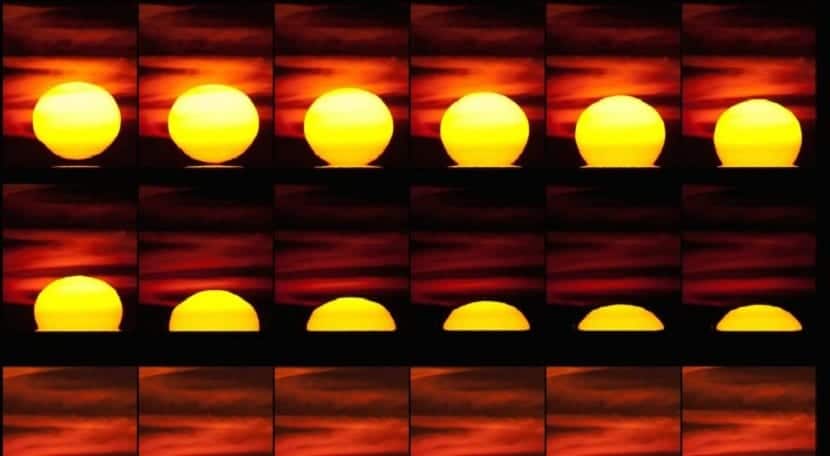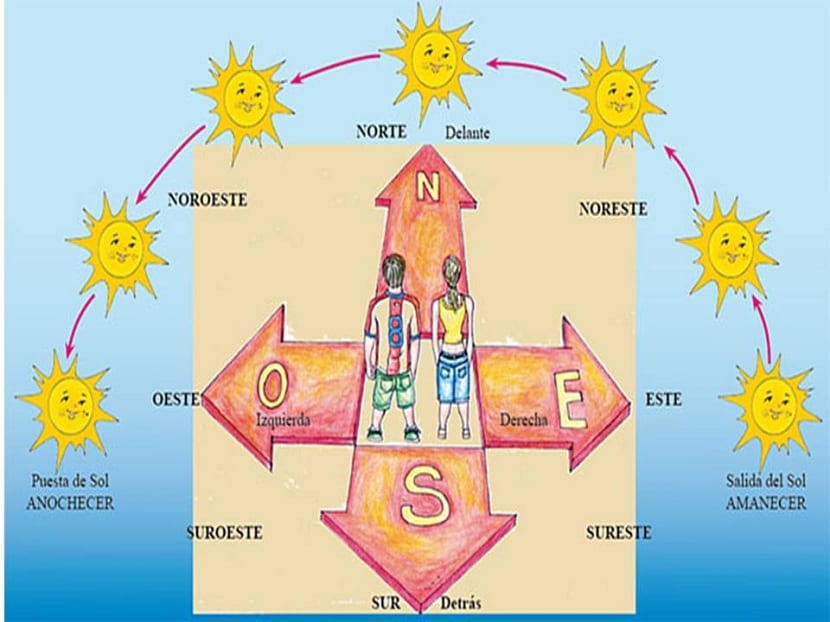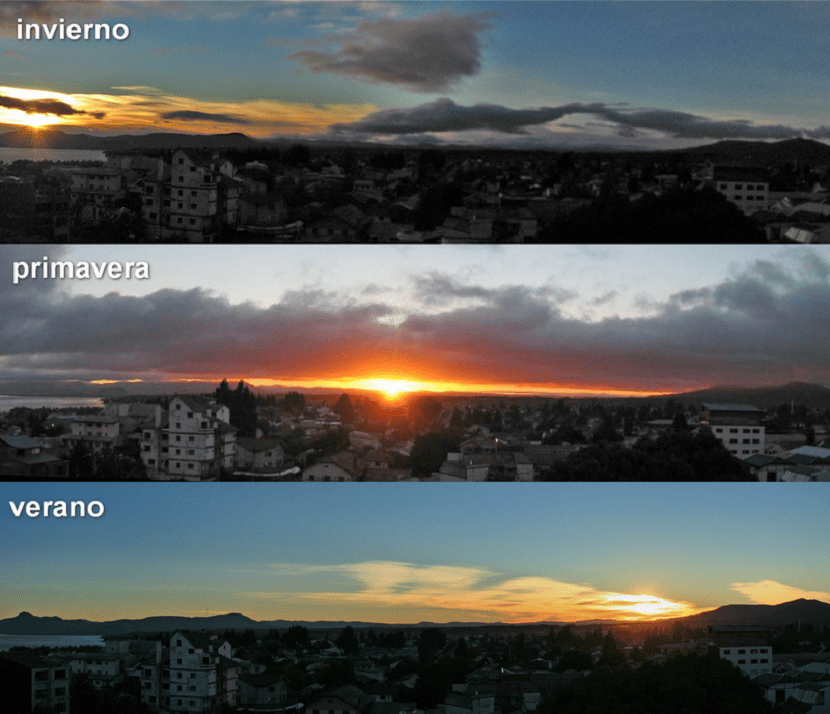
Surely many times you have wanted to orient yourself and have looked where the sun rises. Since childhood you have always been told that the Sun rises in the east and sets in the west. Also, there have always been some signs of it in western movies. This typical orange sunset with the huge Sun falling over the horizon line is characteristic of the sunset. However, the sunrise and sunset vary greatly depending on where you are. Where does the Sun really rise?
In this post we are going to tell you everything you need to know about it and you will be able to teach yourself to position yourself much better by guiding you from our biggest star. Do you want to know more about the subject? Read on to find out everything.
The Sun in ancient civilizations

Our great star of the Solar system it is fixed in the Universe. However, from a terrestrial point of view, it is he who seems to move since, throughout the day, it changes its position. The movement of an object occurs with respect to an observer. For this reason, since ancient civilizations it was thought that it was the Sun that moved and not the Earth.
There are numerous civilizations that, since ancient times, have granted a special cult to the elements of nature. In most of them, the Sun was the most acclaimed element of all, as it was the one that illuminated our lands and gave light to the crops. The study of their movements has served to create ancient clocks in which the hours were based on the position of the Sun in the sky at the end of the day.
This is how the position of the Sun and the behavior of the days were investigated. Nowadays, we know that the number of hours of daylight that we have varies between the seasons. This is due to the movements of rotation, translation and nutation of the Earth. In addition, what really affects us to heat and cold is the inclination with which the sun's rays strike the Earth's surface and not the distance between the Earth and the star.
This has always had scientists restless, until later it was discovered that it was the Earth that was moving and not the Sun. However, where does the Sun rise and where does it set? Depending on the position of the observer, can it change or is it an infallible option to guide and orient us?
Cardinal points

Darkness has always been related to evil and negative behavior. This is why the Sun has been studied since ancient civilizations. They have always wondered where the Sun rises. However, although it seems logical, it is not.
This is where the function comes in the Cardinal points. It is a reference system that helps us guide ourselves on a map and know how to orient ourselves at all times. These cardinal points have been standardized internationally, so that they are the same for everyone. These world-standardized cardinal points are: North, South, East and West.
Theoretically, the sun rises in the East and sets in the West. We have heard this say millions of times from millions of people. If we are lost in the middle of a field, surely someone will have said "the Sun rises in the East and sets in the West." However, it is not so easy to know, since there are some inconsistencies that will make us doubt this statement.
Where does the sun really rise

You have to know that the Sun rises in the East as it is always said, but it only does so twice a year. This is because the inclination of the Earth and its rotational and translational movements make the cardinal points from which the Sun rises they are not always in the same place.
When saying that it is placed in the West, it will happen in the same way as with the East. It only comes out twice a year. This has to do with what we have mentioned above about the length of days throughout the seasons of the year. Depending on the inclination with which the sun's rays reach the earth's surface and the translational movement that the Earth has at a certain moment of its orbit, the Sun will rise closer to the cardinal point East or not. It only does it exactly twice a year, during the spring and fall equinoxes.
These are the moments in which the Earth is aligned in such a way with the Sun that its rays can perfectly go out in the East and set in the West.
The importance of the equinoxes and solstices

In order to know the sunrise and sunset, the equinoxes and solstices are very important elements. During the spring and fall equinoxes are the only two moments in which the sun's rays reach us as perpendicular as possible to the earth's surface. On the other hand, during the solstices, we can see that we have the rays more inclined than ever.
These factors are taken into account to know the number of hours of sunshine that we will have throughout a day and at the end of the seasons. For this reason, it is important to fix the cardinal points and to know well the position of the Earth with respect to the Sun in its orbit of translation to know exactly where the Sun will rise.
During the rest of the year other than the equinoxes, the Sun rises somewhat further north in spring and summer, while in the months colder fall and winter will come out a little more south-facing.
As you can see, not everything is black and white in this astronomy thing. Neither can it be correctly stated that the Sun rises in the East nor that it sets in the West. So, to guide us through the field, we can use other types of signs that are more reliable or wait until the times are very close to the equinoxes.